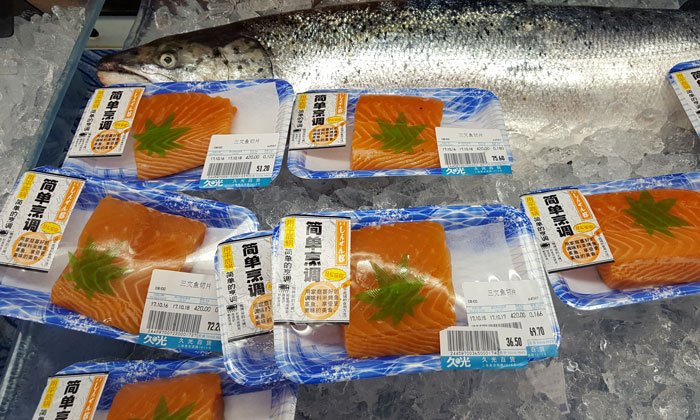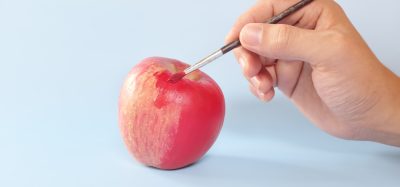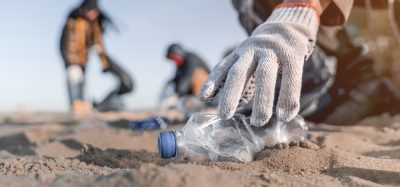Isotope fingerprinting method lifts lid on salmon nutrition
- Like
- Digg
- Del
- Tumblr
- VKontakte
- Buffer
- Love This
- Odnoklassniki
- Meneame
- Blogger
- Amazon
- Yahoo Mail
- Gmail
- AOL
- Newsvine
- HackerNews
- Evernote
- MySpace
- Mail.ru
- Viadeo
- Line
- Comments
- Yummly
- SMS
- Viber
- Telegram
- Subscribe
- Skype
- Facebook Messenger
- Kakao
- LiveJournal
- Yammer
- Edgar
- Fintel
- Mix
- Instapaper
- Copy Link
Posted: 6 April 2018 | George Smith (New Food) | No comments yet
To reduce costs and impact on wild fish stocks, carnivorous fish are increasingly fed plant-based diets in aquaculture. However, the rapid development in aquaculture fish production has not been matched by new methods that accurately can trace the food chain supply in aquaculture production.


TRACEABLE: Salmon packed in the cooling shelf of a high-end supermarket in Shanghai/China. Kiel researcher developed a new method for tracing protein sources of farmed and wild salmon Photo: Thomas Larssen, Kiel University
It’s one of the world’s most popular fish and demand is surging. With that comes an increased need for feed, particularly protein. Salmon farmers are departing from the traditional fishmeal source to provide for their stock with dozens of ingredients such as soy, insects, macroalgae, mussels and yeast.
But in this age of increased demand for traceability, the nutrition of farmed and wild salmon has been hard to gauge. For the first time, an international team lead by researchers at Kiel University and the Kiel Cluster of Excellence “The Future Ocean” has succeeded in developing an efficient authentication method.
“Our method, stable isotope fingerprinting of amino acids, has several advantages compared to conventional methods. For the first time, we can differentiate organic, conventional, and wild salmon from different origins” said first author Dr. Yiming Wang from the Leibniz-Laboratory for Radiometric Dating and Stable Isotope Research at Kiel University.
“We are also able to differentiate salmon fed alternative diet ingredients such as insect meal and macroalgae.”
Since 2015 conventionally farmed Atlantic salmon (Salmo salar L.) have been fed only 20 per cent marine based diets as opposed to 90 per cent four decades ago.
The new method will help to ensure that sustainable aquaculture products are produced in compliance with standards such as the EU Ecolabel and other organic certification programs. Potentially, the isotope fingerprinting method can also support the new blockchain movement for enhancing food safety and production transparency.
“We are very excited about our findings,” said the senior author Dr. Thomas Larsen of the Leibniz Laboratory for Radiometric Dating and Stable Isotope Research at Kiel University. “Our method can be expanded to authenticate other seafood products. This is a step towards promoting healthy and environmentally sound aquaculture practices.”
The research paper can be read by clicking here.
Related topics
Food Security, Free From, Packaging & Labelling, Quality analysis & quality control (QA/QC), Research & development








